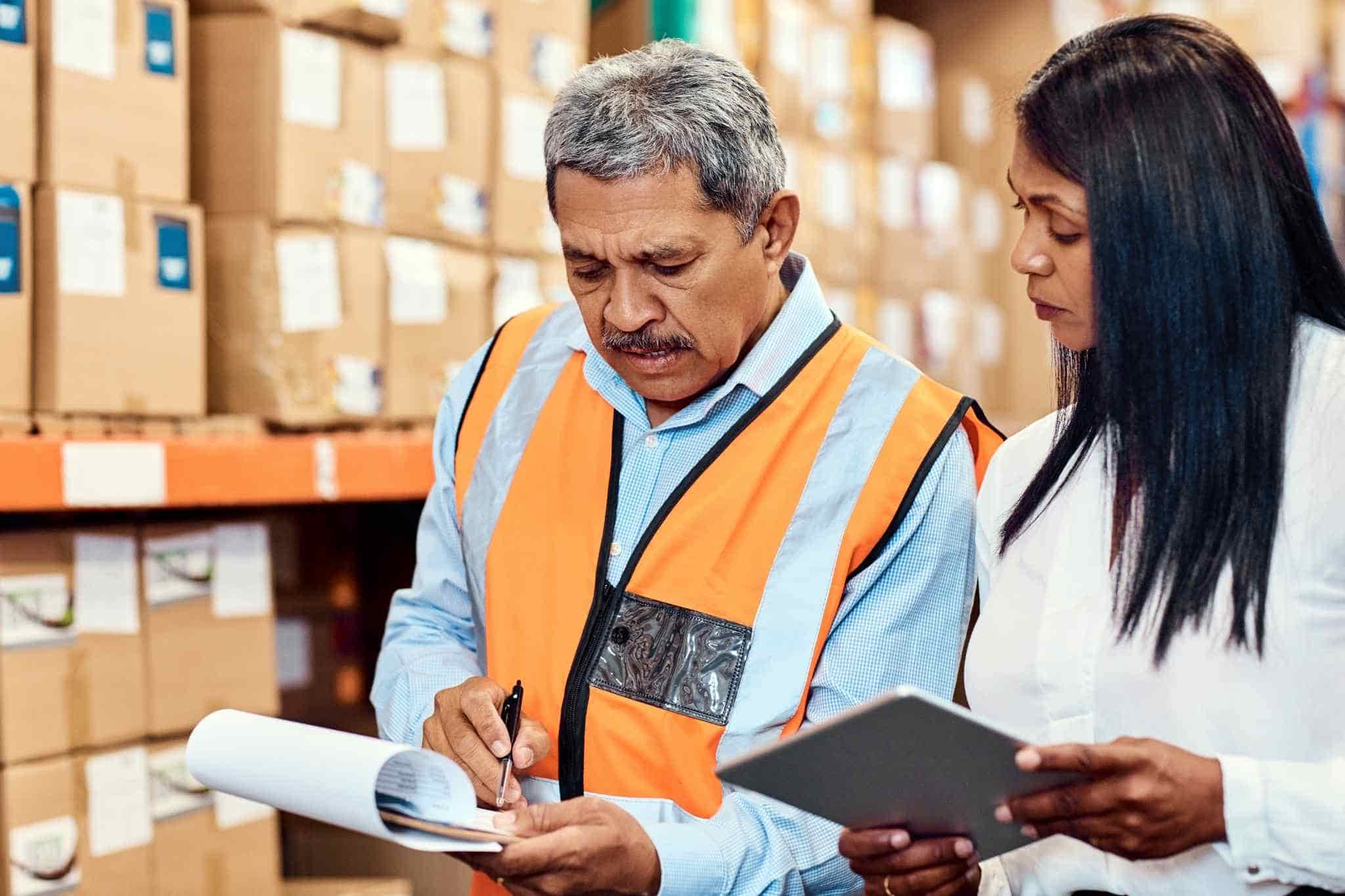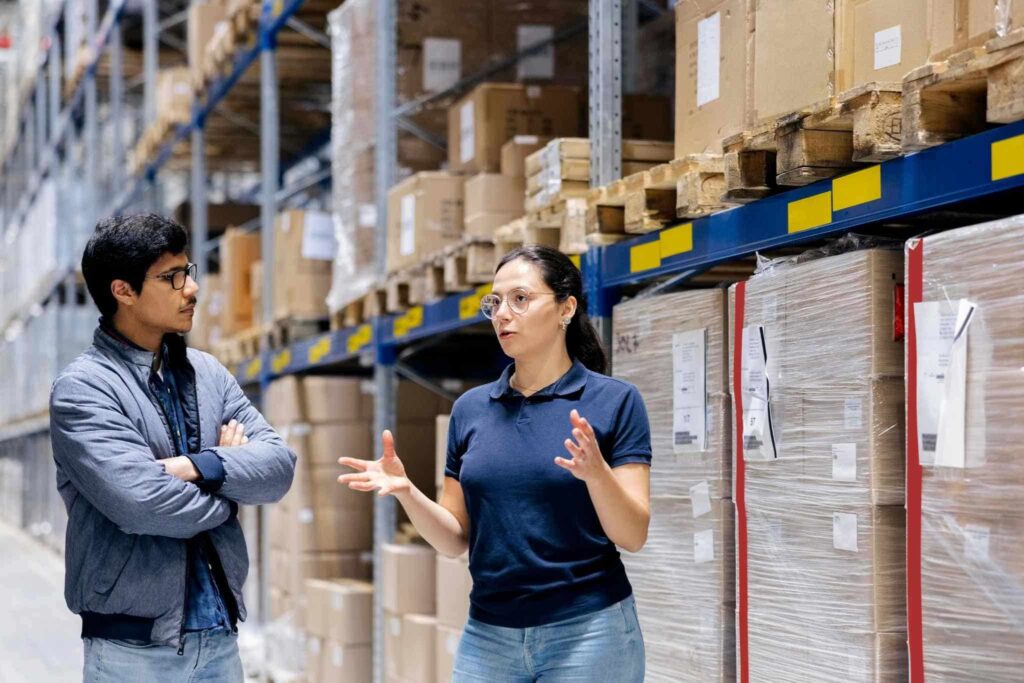Table of Contents
Key Takeaways✔ Choose a provider that manages every stage of the process to ensure smooth operations and fewer handoffs. ✔ Use modern tracking tools and digital systems for real-time visibility and better decision-making. ✔ Select a company that can grow with business needs to maintain efficiency during demand changes. ✔ Access multiple transport modes to gain more delivery options and avoid delays. ✔ Tailor services to specific requirements to better align with business goals. ✔ Build a strong network to support both local deliveries and international shipping without disruptions. ✔ Follow regulations and prepare for risks to reduce delays and protect against costly issues. |
Finding the right logistics partner in New York, NY, can make a major difference in how efficiently goods move from suppliers to customers. Full-service supply chain solutions go beyond basic transportation, covering everything from warehousing and inventory management to last-mile delivery and global shipping. Businesses that understand what to look for can better identify providers that match their needs and keep operations running smoothly.
Here are 7 features to look for when determining what logistics companies in NYC offer full-service supply chain solutions.

How to Choose NYC Logistics Companies for Supply Chains
1. End-to-End Service Coverage
Managing the entire supply chain from start to finish means that a logistics company takes care of every stage — from sourcing and storing products to delivering them to the customer. This approach allows businesses to rely on one provider for all their logistics needs, which can improve efficiency and reduce the risk of delays or miscommunication.
Stages Included in End-to-End Service
Each stage of the supply chain plays a role in making sure goods move smoothly from the supplier to the customer. A full-service provider handles all of these parts under one roof:
- Procurement Management: Securing products, materials, or supplies from the right sources while keeping costs in check and ensuring consistent quality. Reliable procurement reduces delays in manufacturing and helps keep inventory levels balanced.
- Warehousing and Storage: Providing safe, organized storage facilities with systems that track inventory in real time. Accurate tracking allows businesses to meet customer demands quickly without overstocking.
- Transportation Planning: Coordinating how products move between locations using the best routes and most cost-effective transportation modes. This often involves balancing speed, cost, and reliability to meet delivery goals.
- Order Fulfillment: Processing customer orders accurately and ensuring they are ready to be shipped quickly. Streamlined order handling can improve customer satisfaction and encourage repeat business.
- Last-Mile Delivery: Delivering goods to the customer’s door on time and in good condition. When asking how do logistics companies in NYC handle last-mile delivery, many use local driver networks and route optimization software to make deliveries faster and more efficient.
Benefits of a Single-Provider Approach
Working with one logistics partner that offers complete coverage can make a business run more smoothly and give customers a better experience:
- Simplified Communication: Having one main contact reduces confusion and keeps everyone aligned, which is essential since about 90% of a project manager’s time is spent on communication. Clear channels make it easier to address issues or changes quickly, helping projects stay on track
- Faster Problem Solving: Issues are resolved more quickly because the same provider oversees all parts of the process. Centralized control allows for quicker decision-making when challenges arise.
- Cost Efficiency: Combining services often leads to better pricing and fewer extra fees. Businesses may also save by avoiding the need to manage multiple contracts with different vendors.
- Consistent Service Quality: Standards remain the same across all stages of the supply chain. This consistency helps maintain brand reputation and ensures customers have a reliable experience.
2. Advanced Technology & Tracking
In the world of logistics, technology plays a big role in making operations smooth and reliable. When asking, “What logistics companies in NYC offer full-service supply chain solutions?” one of the most important things to check is if they use the right digital tools. These tools help track shipments, manage stock levels, and share updates in real time, which can make a big difference for businesses.
Digital Tools
Modern logistics companies rely on software and systems to manage complex supply chains. Choosing a company with strong technology is a smart answer to “How to select the right logistics company in NYC for your business?” because advanced tools usually mean better coordination and fewer delays.
- Warehouse Management Systems: Help control and track inventory inside warehouses so nothing is misplaced or delayed. They can also record movement history, making it easier to trace any errors.
- Transportation Management Systems: Plan and monitor shipments, choose the best routes, and reduce delays. These systems can also adjust plans quickly if there are traffic issues or weather problems.
- Customer Portals: Give clients direct access to shipment details, invoices, and service requests. They often allow real-time communication with the logistics team for faster problem-solving.
Inventory Visibility
Knowing exactly what stock is available and where it is stored helps businesses avoid costly mistakes. It also gives clear answers to questions like “What is the average delivery time with logistics companies in NYC?” because delays often come from inventory issues.
- Automated Reordering Alerts: Notify when items are running low, avoiding last-minute shortages. These alerts can be set based on usage trends so replenishment happens before a problem arises.
- Centralized Inventory Data: Combines all warehouse and in-transit information into one system for easy access. This setup also helps compare stock levels across different locations in seconds.
Real-Time Tracking
Real-time tracking lets customers see exactly where their shipment is and when it will arrive, giving them confidence and clarity. This capability is especially important when considering how logistics companies in NYC handle last-mile delivery, since the final step often has the biggest impact on customer satisfaction.
For manufacturing firms, tracking and tracing shipments is not only a key part of customer service but also an essential tool for managing logistics networks efficiently.
- GPS Shipment Tracking: provides live updates on delivery vehicles so both the company and customer know the exact location. It also helps managers adjust schedules if a route takes longer than expected.
- Delivery Notifications: send messages to customers with estimated arrival times and updates if something changes. These alerts can improve customer satisfaction by reducing uncertainty.
- Proof of Delivery Systems: capture signatures or photo confirmation to show that an order has been delivered correctly. This reduces disputes and creates a clear delivery record for future reference.
3. Scalable Solutions
Scalable solutions mean that a logistics company can adjust its services to match the customer’s needs as they change. This is essential for businesses in NYC that may see sudden growth or experience seasonal spikes in demand. A company that cannot scale might cause delays, stock shortages, or extra costs. Knowing what logistics companies in NYC offer full-service supply chain solutions can help identify which ones are prepared to handle these changes.
Key Elements of Scalability
When a business grows or faces high-demand seasons, the supply chain must keep up. Choosing the right provider answers the question, “How to select the right logistics company in NYC for your business?” by showing their ability to adapt and provide reliable service without interruptions.
- Capacity to Increase Storage: The ability to quickly expand warehouse space or access additional facilities during peak periods helps keep goods moving smoothly. Extra storage options mean products can be stocked in advance to avoid backlogs during high sales periods.
- Flexible Transportation Network: Having multiple carriers and transport options ensures products reach customers on time, even when orders surge. A broad network allows companies to shift deliveries to faster routes or alternate transport methods when needed.
- Additional Workforce Support: Adding extra staff during busy months helps speed up packing, handling, and delivery without lowering service quality. More workers can also reduce order processing times and help maintain customer satisfaction.
Planning for Seasonal Peaks
Many NYC businesses see higher order volumes during holidays, special events, or promotional sales. Scalability means a logistics company can adjust schedules, resources, and processes to meet these temporary spikes. Understanding what is the average delivery time with logistics companies in NYC can help measure if they can maintain speed even during peak periods.
- Demand Forecasting Tools: Systems that predict busy seasons help prepare inventory and staffing in advance. Accurate forecasting ensures resources are allocated where they are most needed.
- Adjustable Delivery Schedules: The ability to add more delivery slots or routes ensures customers receive their orders quickly. This flexibility can also help businesses meet promised delivery times despite heavier workloads.
- Supply Chain Flexibility: Being able to re-route shipments or use different distribution centers can prevent delays. Alternate paths and backup facilities can keep products moving even when one part of the network is under strain.
Long-Term Growth Support
A scalable logistics partner supports not just seasonal spikes but also steady business growth. Businesses may expand product lines, enter new markets, or increase online orders. Knowing how logistics companies in NYC handle last-mile delivery is key because it shows whether they can maintain service quality as order numbers grow.
- Infrastructure Expansion: Access to a larger network of warehouses, hubs, and vehicles ensures the company can keep up with expansion. This capacity supports growth without compromising delivery times or coverage areas.
- Technology Integration: Systems that grow with the business help manage more orders without losing efficiency. Integrated technology also improves communication between suppliers, warehouses, and customers.
- Consistent Service Levels: Maintaining delivery speed, accuracy, and customer satisfaction as volume increases is a sign of a strong partner. High service consistency builds trust and strengthens long-term business relationships.
4. Flexible Transportation Options
Having access to different transportation methods is an important part of a full-service supply chain. It allows goods to move faster, reach more places, and avoid delays when one route is unavailable. This is one reason many ask, “What logistics companies in NYC offer full-service supply chain solutions?”—because flexibility is a sign of reliable service.
Benefits of Using Multiple Transport Modes
Using more than one mode of transportation gives companies a strong advantage in meeting customer needs. It creates a backup plan for moving goods and helps shipments arrive on time.
- Faster Delivery Times: Using a mix of trucks, air freight, rail, and sea shipping can speed up the movement of goods. This helps businesses keep up with customer expectations and meet urgent deadlines, which directly affects the answer to what is the average delivery time is with logistics companies in NYC.
- Wider Reach: Multiple transport modes mean goods can reach both nearby customers and far-off markets without added complexity. It gives companies the ability to expand into new areas without having to rely on a single transportation method.
- Better Risk Management: If one route is delayed due to weather or traffic, another mode of transport can keep deliveries on schedule. This reduces downtime and prevents customer orders from being disrupted.
- Cost Efficiency: Choosing the right mode for each shipment helps control costs without sacrificing service quality. It also allows businesses to match transport methods to the value and urgency of their products.

5. Customizable Service Plans
Not every business has the same shipping needs. Some need daily deliveries, others only ship once a week. A logistics company that offers customizable service plans can adapt to these differences. This is a major factor for those asking, “How to select the right logistics company in NYC for your business?”
Why Personalization Matters
Personalized services create a closer fit between the business’s needs and the logistics provider’s capabilities. They also help companies respond better to market changes and customer demands.
- Efficiency Gains: Tailored services reduce wasted time and resources by focusing on what the business needs. They also help streamline communication between the company and the logistics provider.
- Improved Customer Experience: Reliable and consistent service builds trust with end customers, answering concerns such as “How do logistics companies in NYC handle last-mile delivery?” Meeting delivery promises can boost customer loyalty and repeat business.
- Better Cost Control: Only paying for services that are truly needed helps keep budgets in check while still maintaining high service quality. This allows companies to invest more in other areas of growth while keeping logistics efficient.
6. Strong Local & Global Network
A strong local and global network is important for keeping supply chain operations smooth and reliable. In NYC, having a solid local infrastructure means faster connections between warehouses, ports, and major highways.
Key Advantages Of A Strong Network
A dependable network ensures goods move efficiently from point A to point B, no matter the distance. Companies with this capability can serve both local and international markets without interruptions.
- Local Reach And Speed: Fast movement of goods within NYC thanks to well-placed warehouses and access to major roads. This reduces transit time for local deliveries and makes supply chains more efficient.
- International Connections: Reliable partnerships with overseas carriers and freight forwarders to reach global markets. These connections open more delivery options and help businesses expand internationally.
- Reduced Delays: Coordinated scheduling between local and global routes to prevent bottlenecks. Companies that align transport times effectively can keep products moving without long hold-ups.
- Flexible Routes: Ability to adjust delivery routes when traffic, weather, or customs issues arise. This flexibility keeps shipments on track even when unexpected problems occur.
7. Compliance & Risk Management
Compliance and risk management are critical for keeping shipments on time and avoiding costly problems. In NYC, logistics companies must follow local, state, federal, and sometimes international rules. Following these rules ensures safe, legal, and smooth operations from start to finish.
Ways Logistics Companies Manage Compliance And Risk
Having strong compliance and risk strategies means a company can adapt to changes and protect goods during transport. These practices also keep operations legal, safe, and efficient.
- Regulatory Knowledge: Understanding rules for shipping, customs, and safety both locally and internationally. Companies that stay updated with changes can prevent fines and shipment delays.
- Safety Protocols: Following proper handling guidelines to protect goods from damage. Strong safety practices also help keep employees and equipment safe.
- Documentation Accuracy: Ensuring all shipping papers and customs forms are filled out correctly to avoid delays. Accurate paperwork speeds up processing and keeps shipments moving.
- Risk Planning: Preparing backup plans for weather delays, port closures, or supplier issues. These plans allow operations to continue smoothly even when disruptions occur.
Frequently Asked Questions
What's the difference between logistics and supply chain?
Logistics focuses on the movement, storage, and flow of goods from one point to another, while supply chain covers the entire process from sourcing raw materials to delivering finished products. Logistics is a part of the supply chain, but the supply chain also includes planning, sourcing, production, and coordination among different parties. In simple terms, logistics is about “how things get there,” while supply chain is about “everything it takes to make and deliver them.” Both are connected, but the supply chain is broader in scope.
What is cold chain logistics?
Cold chain logistics is the transportation and storage of temperature-sensitive goods under controlled conditions to maintain quality and safety. It is commonly used for food, pharmaceuticals, and chemicals that require specific temperature ranges. This process involves refrigerated trucks, cold storage warehouses, and specialized monitoring systems. Proper cold chain management ensures products remain safe and effective until they reach their destination.
What is 3PL, 4PL, and 5PL?
3PL (third-party logistics) is when a company outsources logistics services like warehousing and transportation to an external provider. 4PL (fourth-party logistics) manages the entire supply chain on behalf of a company, often coordinating multiple 3PLs. 5PL (fifth-party logistics) focuses on fully integrated supply chain solutions, using technology and network optimization to handle complex, large-scale logistics needs. Each level offers different control, scope, and responsibility.
Who manages a supply chain?
A supply chain is typically managed by supply chain managers, logistics managers, or operations directors within a company. They coordinate suppliers, manufacturers, warehouses, and transportation providers to keep products moving efficiently. In larger businesses, specialized teams handle different parts of the process. In some cases, companies hire external logistics partners to oversee supply chain operations.
What is the most expensive part of logistics?
Transportation is often the most expensive part of logistics because it involves fuel, labor, vehicles, and maintenance costs. Long distances, complex routes, and fast delivery requirements can increase expenses significantly. Storage, handling, and packaging can also be costly, but transportation usually takes the largest share of the budget. Efficient route planning and load optimization help reduce these costs.

Boost Supply Chain Efficiency With Expert Support in New York, NY!
3PL Warehouse by Best delivers reliable full-service supply chain solutions designed for businesses in New York, NY. With strong local infrastructure and global connections, we manage warehousing, distribution, and last-mile delivery with precision. Businesses in New York, NY, can rely on our advanced technology, flexible transportation options, and proven compliance practices to keep goods moving without delays. Partnering with 3PL Warehouse by Best means gaining a dependable logistics ally that adapts to changing demands and market conditions.
Contact 3PL Warehouse by Best today to discuss tailored solutions for any supply chain need!

